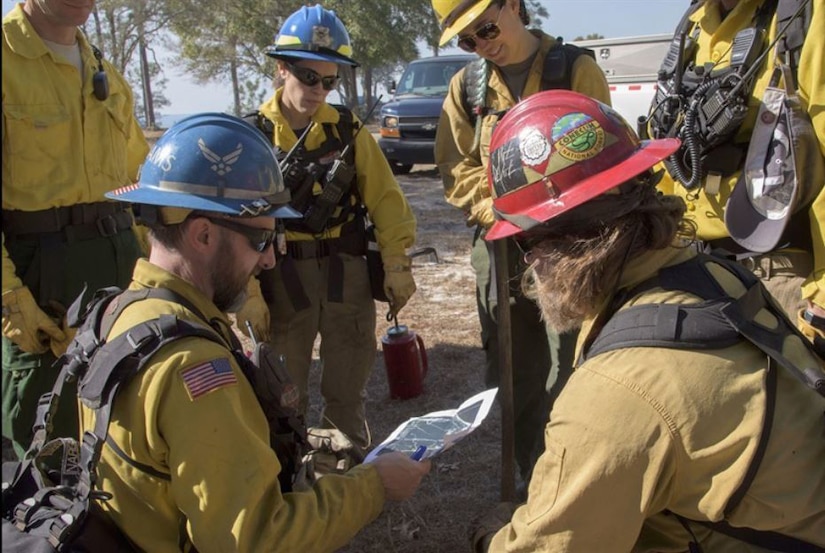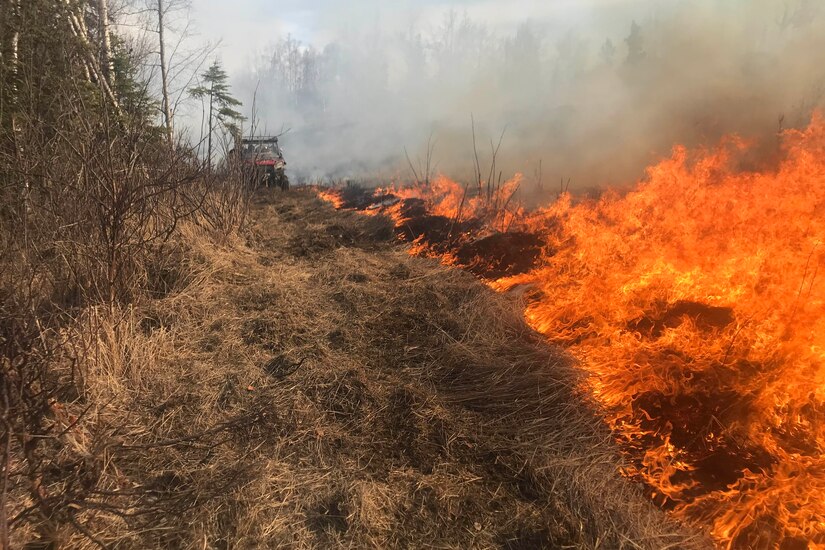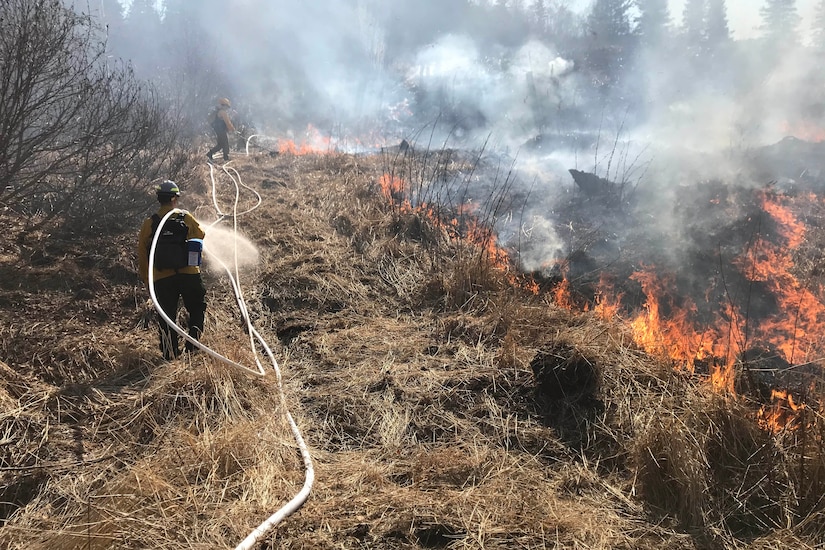Aug. 11, 2020 |
"The Air Force recognizes the growing threat of wildfires to our installations caused by training and testing operations and naturally occurring fires in wildland areas on Air Force property," Jeff Domm, director of AFCEC's Environmental Directorate, said. "Wildfires are expensive to control and can negatively impact sensitive and protected habitat and disrupt mission activity."
Along with the pandemic, some installations have had to cope with the threat of wildfires damaging training areas and shutting down bombing ranges. In an effort to continue its mission, the Wildland Fire program reprioritized its goals for the year and enacted COVID-19 safety protocols for its firefighters to follow, Michelle Steinman, Wildland Fire branch chief said.

"We have prevented COVID-19 from derailing our performance and efforts to support mission activity by utilizing air resources, such as helicopters, to attack wildfires from above and implementing procedures to keep our firefighters healthy so they can keep airmen and their families safe," Steinman said.
For example, Steinman said a contract helicopter crew assisted the Eglin wildland support module in Florida to suppress a May wildfire caused by a downed aircraft at the merging of the two streams providing habitat for the threatened Okaloosa Darter on the Eglin range. The helicopter crew released water bucket drops over the crash site while Eglin bulldozer operators worked on the ground to contain the wildfire to 91 acres with only minor disturbance to the darter.
The Wildland Fire Branch is leveraging technology to mitigate COVID-19 by conducting virtual training sessions and encouraging the firefighters in the wildland support module to practice social distancing, reducing fire vehicle capacity and following CDC guidance. The Avon Park WSM in Florida is following safety protocols in the office as well as at home to maintain a fully staffed crew. So far, the seven-member team has completed 16 prescribed burns across 3,400 acres and managed 12 wildfires across 1,044 acres.
"We have taken every precautionary step to ensure that our crew stays healthy because if one person gets sick, then the whole crew is out, which could stop Air Force missions," Frank Gibbs, team lead for Avon Park WSM, said. "We have been very fortunate to be isolated on a range and keep our firefighters safe so that we can continue to do what we do best."
The Joint Base Elmendorf-Richardson WSM in Alaska is also following protocol to remain healthy in case there is a need to protect their local community. Recently, the module teamed up with the JBER Fire Department and a hotshot crew to prevent an intense wildfire from spreading and damaging critical infrastructure.


The fire was ignited from a ricocheted round during military training. Two weeks before the fire, the JBER WSM conducted prescribed burns surrounding the area where the wildfire took place. These burns stopped the progression of the fire and helped the crews contain the wildfire to fewer than five acres. The fire was extinguished in three days, and the crews removed all hazards to prevent reignition.
"We have evacuated thousands of people and that's chaotic," Jon Glover, team lead for JBER WSM, Alaska, said. "This pandemic is just a different type of chaos that we have learned to manage and have adjusted to. Firefighters are problem solvers and we will look at every solution to get the job done safely and effectively."
The Wildland Fire Branch, established in 2012, ensures military mission capability and increases lethality and readiness by reducing the threat of wildfires across 72 installations. The branch includes 14 wildland support modules composed of qualified and equipped personnel who conduct prescribed burns, mechanical fuel reduction and wildfire suppression response at installations within their area of responsibility. Across the U.S., the branch averages 140,000 acres of prescribed fires and responds to more than 100 wildfires.
(Courtney Strzelczyk is assigned to the Air Force Installation and Mission Support Center)
No comments:
Post a Comment